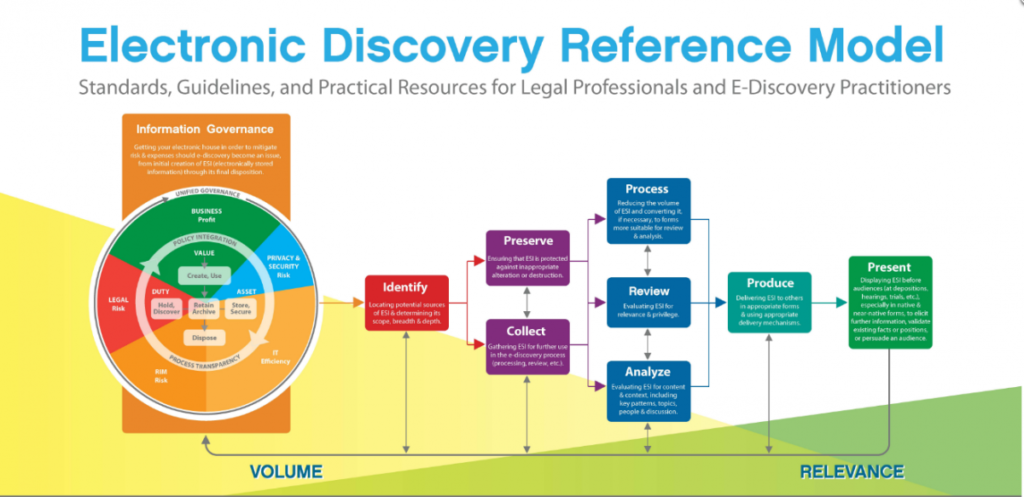As of March 17, 2023, the EDRM Revision project team has released a refreshed EDRM Model 2023.

EDRM Stages Guides
EDRM Stages Standards
- EDRM Collection Standards
- EDRM Identification Standards
- EDRM Processing Standards Guide, Version 1
- EDRM Processing Standards Guide, Version 2
- EDRM Processing Guidelines, Version 3
- EDRM Production Standards, Version 1
- EDRM Production Standards, Version 2
- EDRM Wall Poster
- EDRM Diagram Elements
- EDRM Diagrams – A History
- Talent Task Matrix
- UTBMS eDiscovery Code Set
- EDRM Model Code of Conduct
- EDRM XML
- Technology Assisted Review
The EDRM diagram represents a conceptual view of the e-discovery process, not a literal, linear or waterfall model. One may engage in some but not all of the steps outlined in the diagram, or one may elect to carry out the steps in a different order than shown here.
The diagram also portrays an iterative process. One might repeat the same step numerous times, honing in on a more precise set of results. One might also cycle back to earlier steps, refining one’s approach as a better understanding of the data emerges or as the nature of the matter changes.
The diagram is intended as a basis for discussion and analysis, not as a prescription for the one and only right way to approach e-discovery.
DOWNLOAD THE EDRM POSTER (CLEAN 2020.1)
Below are summary explanations of each EDRM stage.
EDRM Stages
Information Governance – Getting your electronic house in order to mitigate risk & expenses should e-discovery become an issue, from initial creation of ESI (electronically stored information) through its final disposition.
Identification – Locating potential sources of ESI & determining its scope, breadth & depth.
Preservation – Ensuring that ESI is protected against inappropriate alteration or destruction.
Collection – Gathering ESI for further use in the e-discovery process (processing, review, etc.).
Processing – Reducing the volume of ESI and converting it, if necessary, to forms more suitable for review & analysis.
Review – Evaluating ESI for relevance & privilege.
Analysis – Evaluating ESI for content & context, including key patterns, topics, people & discussion.
Production – Delivering ESI to others in appropriate forms & using appropriate delivery mechanisms.
Presentation – Displaying ESI before audiences (at depositions, hearings, trials, etc.), especially in native & near-native forms, to elicit further information, validate existing facts or positions, or persuade an audience.
Other relevant documents:
EDRM Stages Standards – Standards for collection, identification, processing, and production.

